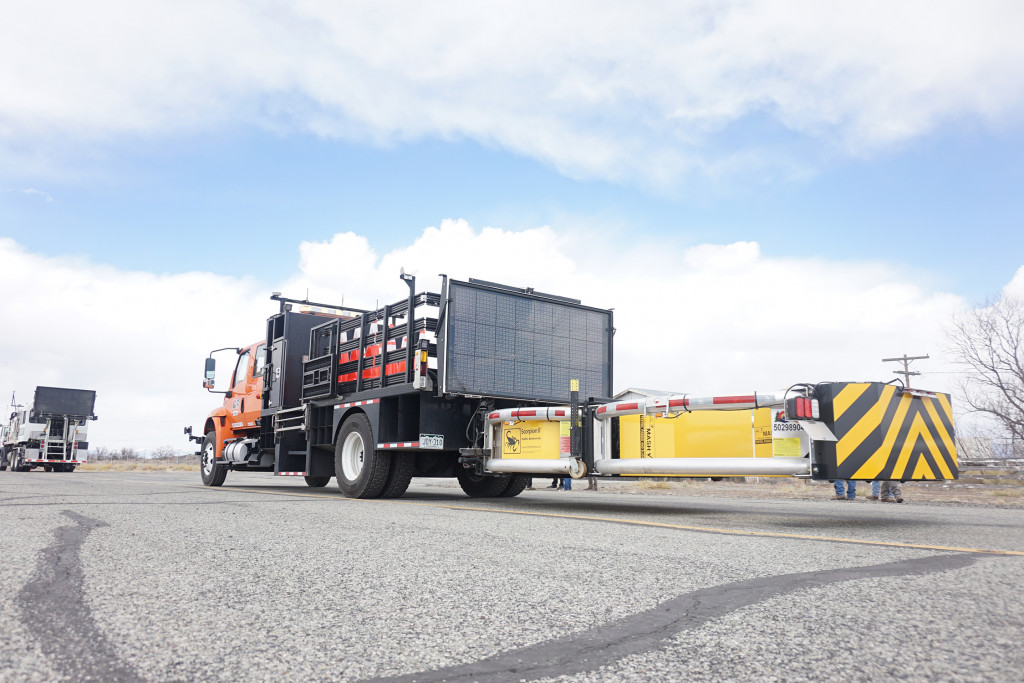Safety first with self-driving ATMA

ALAMOSA — The Colorado Department of Transportation’s (CDOT) Autonomous Truck Mounted Attenuator (ATMA) was at the San Luis Valley Regional Airport in Alamosa for training and calibration this past week.
The ATMA is one of two that are now a part of CDOT’s fleet. Similar vehicles are also being used in 8 states as well as in England.
Typically, a truck-mounted attenuator is a safety vehicle on work sites providing an emergency stop for out-of-control highway vehicles that may accidentally enter the job site. As such they serve a necessary, albeit dangerous, job.
Like many innovations, the automation of truck-mounted attenuators was born of a military application. Kratos Defense and Security Solutions, of San Diego, Calif. specializes in unmanned systems in addition to combat systems and satellite communications. One military use for the technology was resupply missions, which sought to automate convoy vehicles transporting goods with the overall goal being to minimize risk in case of an incident.
Automation in a civilian application, using unmanned technology, allows CDOT to remove a driver from what could potentially be a dangerous situation while also adding a skilled position to the operation.
Maynard Factor, the Vice President of Business Development for Micro Systems Inc., a Kratos company spoke on the innovation.
“The primary objective, the reason you want to automate that vehicle is for an increase in safety. It’s all about bringing the person out of that vehicle because that vehicle is essentially a human-driven crash barrier.”
The position that would have been driving the truck-mounted attenuator has been relocated into the lead truck and is instead put in charge of monitoring the ATMA and ensuring everything is functioning as intended.
“You have that extra layer of safety in addition to all the redundancies and safety systems you still have a human being that has eyes on the vehicle,” said Factor.
Instead of a human life in the driver’s seat, the pedals and wheel are operated by an ingenious combination of navigation equipment and actuated pedals and steering. All of which is tucked away allowing for the vehicle to be manually operated when necessary.
Using GPS-based navigation data from the lead truck the ATMA is able to center itself in a follow pattern which allows for adjustments to everything, from follow distance to even an offset trail, meaning the ATMA can follow the lead vehicle from the next lane over. And using light detection and ranging (LIDAR) based obstacle detection ATMA is capable of adapting to real-time changes in its environment such as someone walking near the front of the truck as well as vehicles in nearby lanes much like the lane detection/departure technology in many modern vehicles.
Following the ATMA’s calibration and training period this last week it has now passed the approval period and will go into operation just in time for Workzone Awareness week which will run this year from April 26-30.



